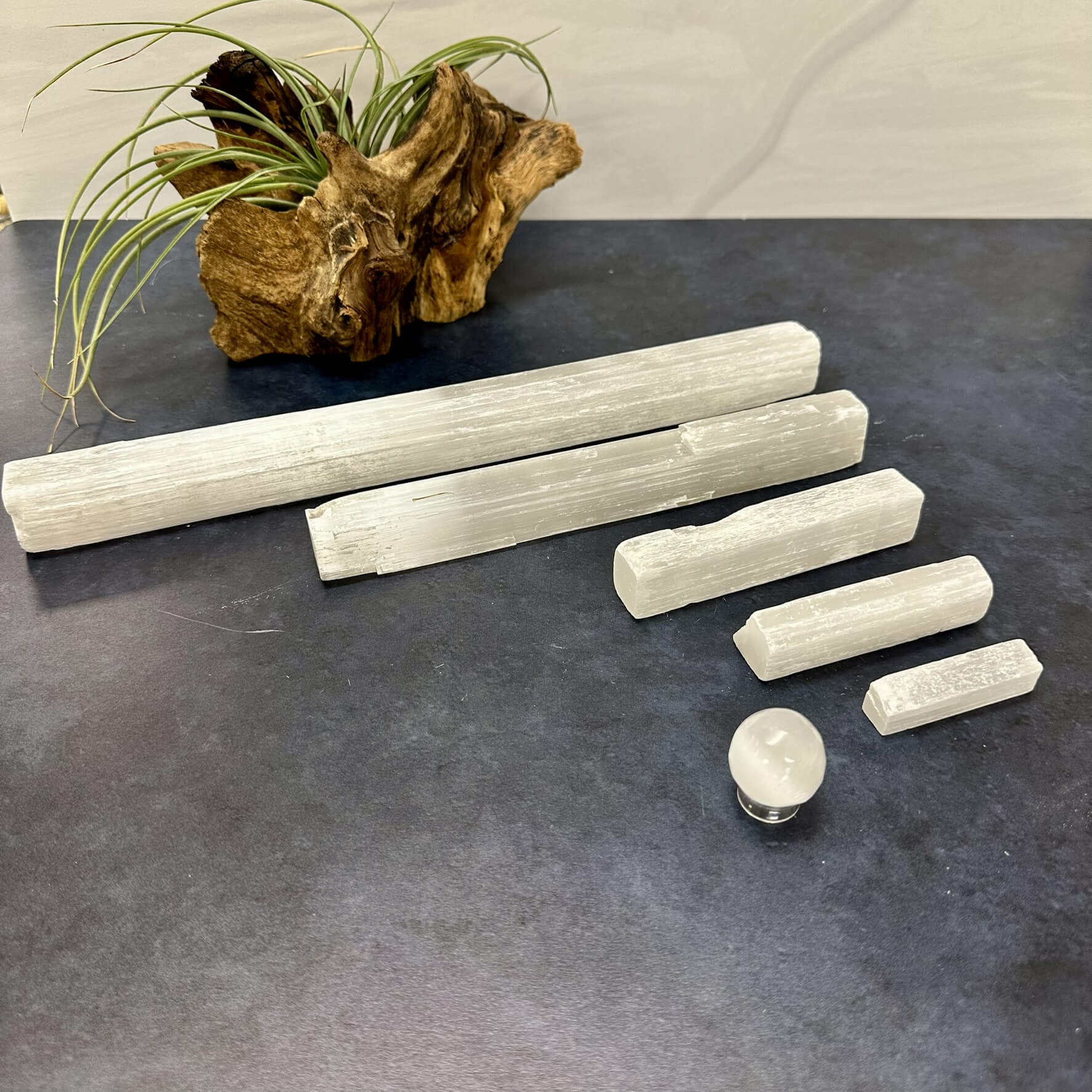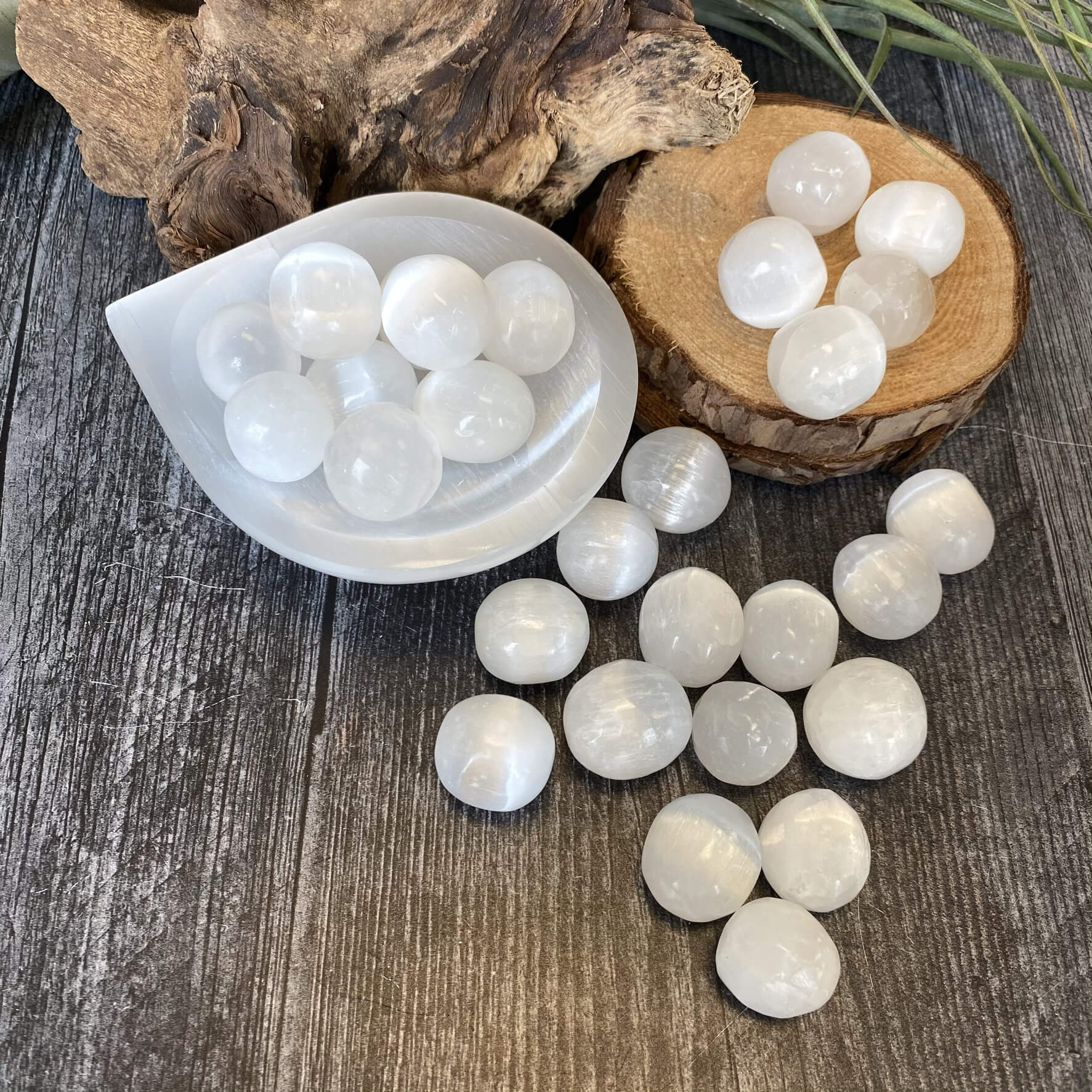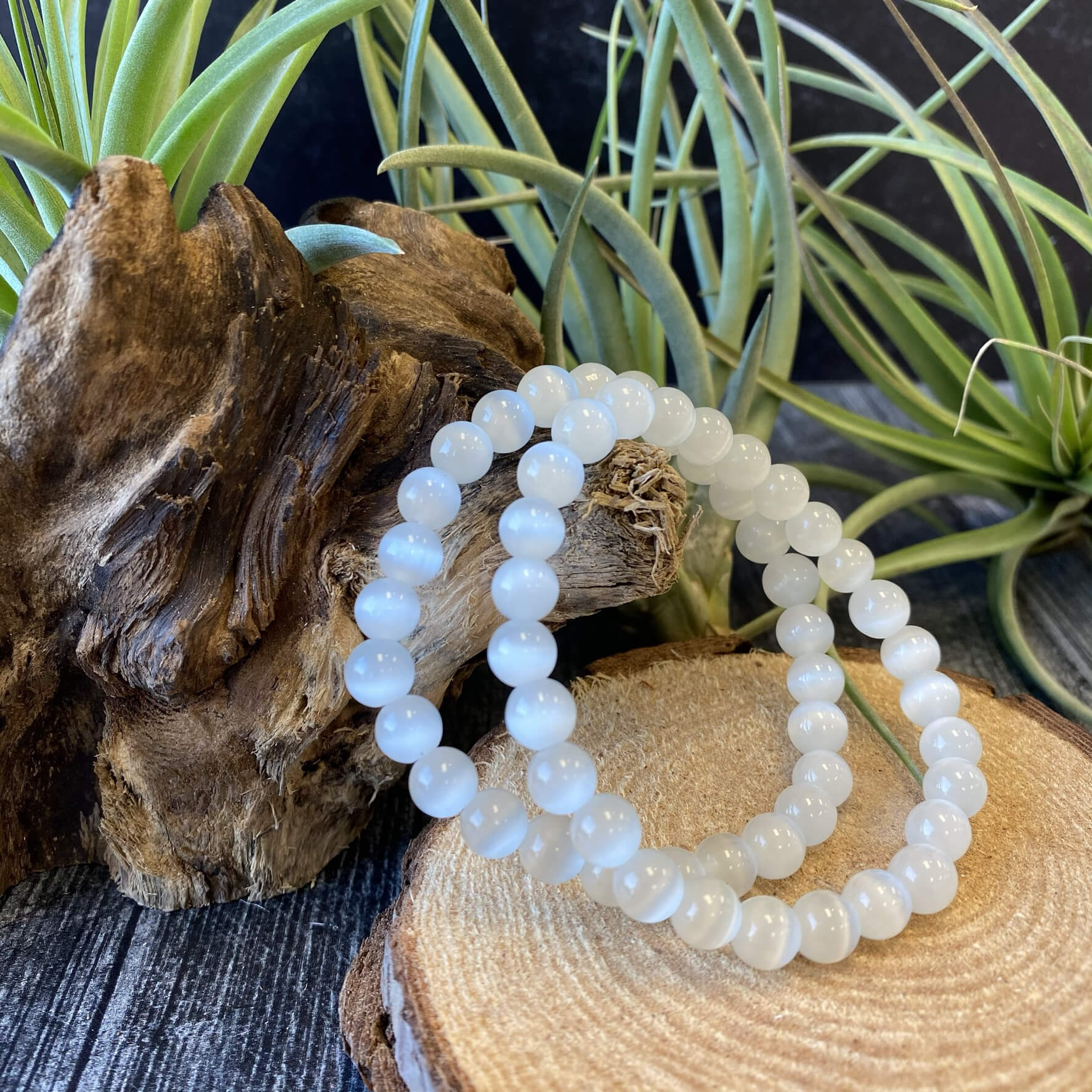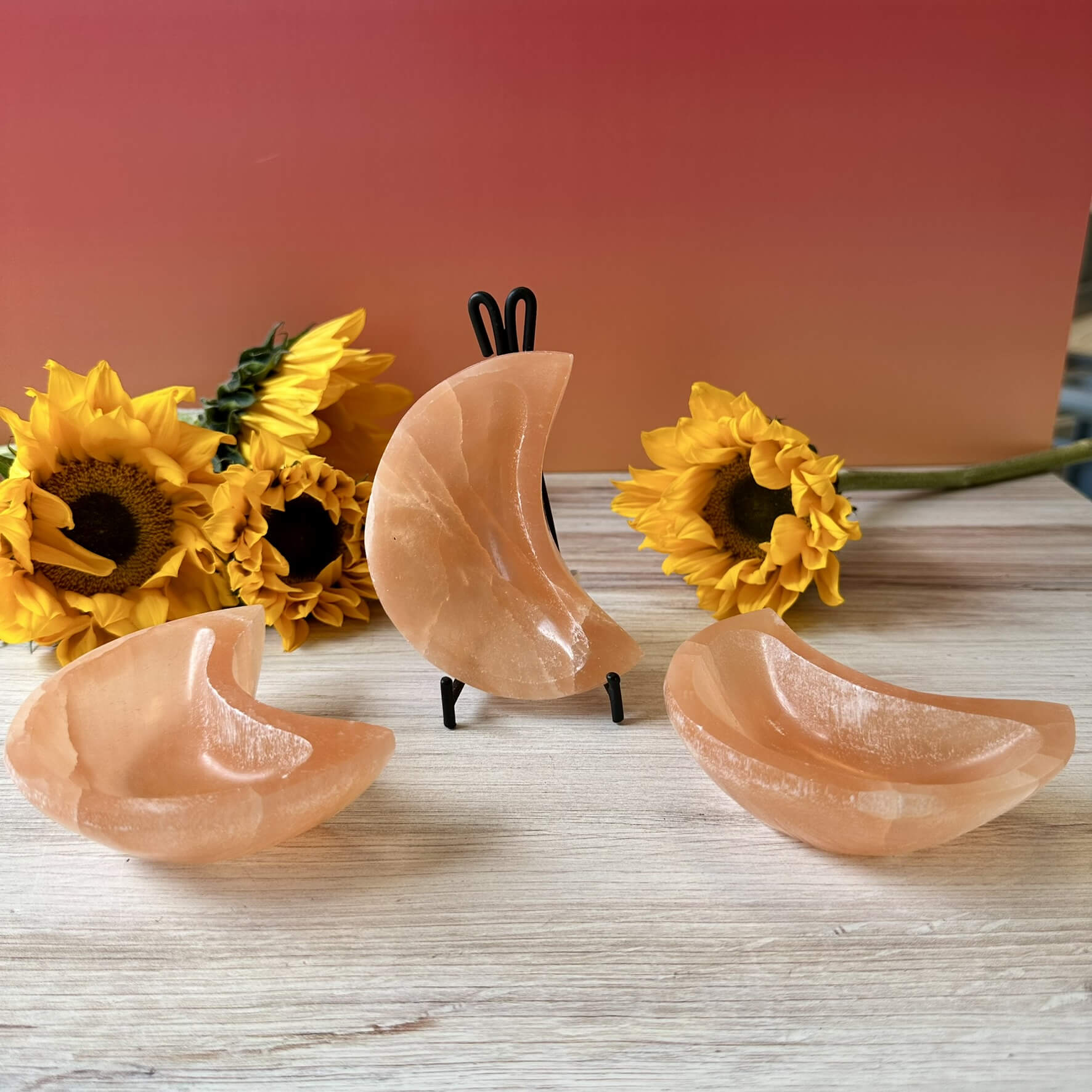
Selenite
Gypsum
Key Words:
Serenity · Purification · Peace · Meditation · Universal Consciousness · Clarity of Thought · Purity of Heart · Universal Love · Positive Thoughts
Serenity · Purification · Peace · Meditation · Universal Consciousness · Clarity of Thought · Purity of Heart · Universal Love · Positive Thoughts
Selenite is the transparent, crystalline form of the mineral gypsum—CaSO₄·2H₂O. It forms when sulfate-rich water evaporates over time, leaving behind delicate, layered mineral deposits. These deposits, often found in sedimentary environments, can create large, clear crystals with a naturally smooth surface and soft, almost pearlescent glow.
The name "Selenite" comes from the Greek word selēnē, meaning “moon,” a tribute to its luminous quality. Despite its fragile appearance, Selenite is remarkably structured. Under the right conditions, it can form immense crystals, including the famous specimens found in the Cave of the Crystals in Naica, Mexico—some over 30 feet long.

Selenite is part of the broader gypsum family and is often grouped alongside Satin Spar (fibrous, silky), Desert Rose (rosette-like formations), and Gypsum Flower (twisted, opaque growths). While the names are sometimes used interchangeably, true Selenite refers specifically to the transparent, sheet-like form known for its clarity and smooth texture.
Its soft composition—ranking only a 2 on the Mohs hardness scale—means Selenite should never be placed in water and should be handled with care. Instead of cleansing this stone in the traditional sense, many people believe it naturally holds a stable, pure frequency and doesn't require regular energetic clearing.

Selenite is widely appreciated for its ability to promote calm and clarity. It’s often used to support quiet time, prayer, meditation, and intentional rest. Many people choose to keep a piece in areas where peace and focus are needed—such as near the bed, on a desk, or in a reading corner.
Because it is thought to gently clear stagnant energy, Selenite is also commonly used to refresh other stones or tools. Simply placing smaller items on a selenite plate or bowl is a popular method for routine clearing.

Orange Selenite is a less common variety of gypsum that gets its warm hue from natural inclusions of iron oxide. It forms under similar conditions as white Selenite, but the subtle variations in its environment—particularly the presence of iron—give it a glowing amber or peachy tone.
Although it shares the same structural and energetic qualities as white Selenite, Orange Selenite carries a slightly more grounding and nurturing presence. Many people describe it as gentler and more emotionally supportive, making it a favorite for personal spaces, especially during seasons of transition, grief, or emotional release.

Its color gives it added visual warmth, making Orange Selenite a comforting option for those who are drawn to softer, more earthy tones. It's often used in spaces where emotional stability and creative flow are desired—like a bedroom, a journal corner, or a personal office.
Just like white Selenite, Orange Selenite should not be placed in water and should be stored carefully to protect its surface. It makes a beautiful companion stone for other tools or wellness items and offers the same clearing properties in a softer, more nurturing tone.



